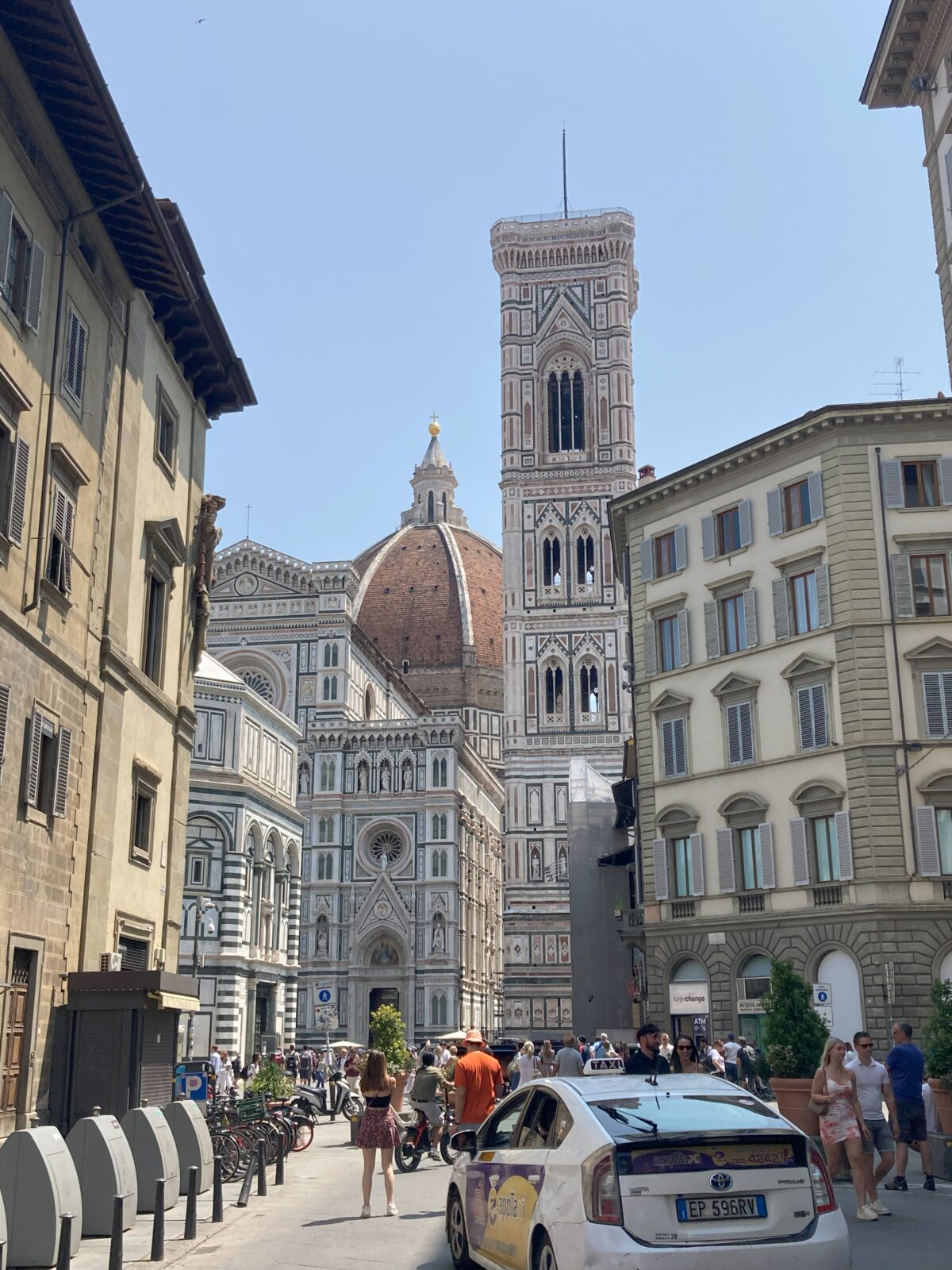It’s that time of year again when Concerning History discusses historical connections to J.R.R. Tolkien’s Middle Earth as an homage to Hobbit Day (officially September 22, 2023). Without further ado, this year I will discuss one real historical city that inspired the creation of Minas Tirith in The Lord of the Rings: Florence (or Firenze), Italy.
This past summer I visited Italy during a trip I mentioned in an earlier post. Florence was both the birthplace of the Italian Renaissance and the city Tolkien cited as his inspiration for the geography and culture of the Gondorian city of Minas Tirith in The Lord of the Rings. It was telling to see how Florence’s square around its famed cathedral, the incredible Duomo (Cathedral of Santa Maria del Fiore), could have served as a model for the Fountain Court in Minas Tirith. The Duomo is the largest free-standing masonry dome in the world and an architectural wonder which helped initiate both the Thirteenth Century Renaissance and inspire the great monumental edifices of the more famous Fifteenth Century Renaissance. The Duomo itself stands next to a bell tower and a baptistry, too. All three are unified in their aesthetic design. Many Medieval cathedrals had these three separate buildings for theological and practical reasons: it took decades to build a cathedral yet cities still needed a bell tower to signal celebrations, warnings, and calls to worship; Catholic teaching held that unbaptized initiates could not enter an actual church until they had undergone the sacrament of Baptism so many polities built a separate but no less impressive space for such a thing; and, a flurry of building projects could help city managers keep and employ skilled masons on various projects as the main cathedral underwent different phases of construction. These three buildings, all next to one another in the Duomo’s square, immediately struck me as an inspiration for Tolkien’s Fountain Court in the fabled Gondorian city of Minas Tirith. While Florence had a cathedral, bell tower, and baptistry in the center of its main square, Minas Tirith had the King’s Court, the Fountain of the White Tree, and the Tower of Ecthelion all together. Similarly, both the baptistry in Florence and the Fountain Court served as physical sources of hope and inspiration to the residents of these real and fantastical cities. They gave residents ultimate hope in a renewed future where evil was subjugated to good. Knowing that Florence served as inspiration to Tolkien, it was not surprising to realize that Florence’s city footprint found a reflection in Middle Earth.
Bryan has also written before on media and books related to the Italian Renaissance and the Medici family of Florence played a huge role in the geopolitics and artistic world of the Fifteenth Century city-state. In many ways, the Medicis find their corollary in the Stewards of Gondor who ruled the beleaguered kingdom in the name of Gondor’s hoped-for-future-king for over one thousand years. Initially, the Medicis were not nobles but prominent bankers who used their unofficial yet significant influence within Florence to direct the city-state’s financial and legal policies. Overtime, this unofficial influence gave way to more direct control over Florentine politics and eventually led to their elevation to nobility as Grand Dukes (it helped that the Medici family had several sons, uncles, and relatives who were Popes and could do such a thing). Similarly, in Tolkien’s Middle Earth, the line of the Stewards began their reign as caretakers until morphing into monarchs-in-all-but-title. Like the Medicis in real history, the Stewards also invested in massive building projects. The Stewards further fortified the main defensive walls of Minas Tirith, constructed a ring wall around the farmland that fed the city, and erected a massive tower at the city’s pinnacle to survey the roads on the city’s approach. These projects transformed Minas Tirith into a beatific bastion just as the Medicis constructed churches, walls, and fortresses to defend their city-state and increase its splendor in the fifteenth century.
The parallels between Florence and Minas Tirith also reflect the cultural connections both city-states had to more ancient civilizations. Florence’s rulers sponsored artists who fused Biblically or classically inspired subjects with humanist ideals and Greco-Roman art forms, commissioning such impressive works as Michelangelo’s David or Raphael’s The Birth of Venus. In fact Florence’s baptistry is thought to have been a Roman temple or worship site prior to Florence’s Christianization. Similarly, Gondorians sought to preserve the history of Numenor and their ancient empire that had fallen into decline. The one major difference is that Tolkien’s characters interpreted Gondor’s cultural preference for the past as a source of enervation (think of Faramir/Gandalf’s monologue about Gondorian kings caring more about their tombs than their sons) whereas historical Florentines used the pass as a catalyst to their creative energies in the Fifteenth Century.
